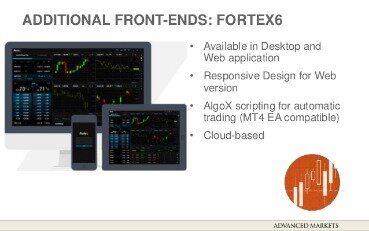Contents:
Certain Zacks Rank stocks for which no month-end price was available, pricing information was not collected, or for certain other reasons have been excluded from these return calculations. These funds track a commodity-related equity index, consisting of a basket of oil and gas-related stocks. They do not invest in physical commodities and should not be expected to directly track the price performance of oil and gas commodities. Investors looking for exposure to the energy industry have several options to play the sector, so it’s important that they know what they’re doing and what returns and risks each ETF ultimately offers. For this reason, some investors stick to basic broadly diversified index funds, such as those based on the Standard & Poor’s 500 index, and leave the trading to the pros.
However, it still offers fairly broad exposure to the entire energy sector, with its top 10 holdings featuring several refinery stocks and a large oilfield services company. The industry also faces geopolitical headwinds from OPEC, the cartel of large oil-producing nations that can significantly influence oil prices by changing production quotas. Add in climate change concerns, and you can see that investments in the oil industry aren’t for the faint of heart.
Why invest using oil ETFs?
Green energy and traditional energy often move in different directions, and indeed, ICLN ended 2022 down 5.4% while oil and gas were off to the races. But the decision by OPEC+ to cut output could spur further investment in cleaner technologies, setting energy ETFs like ICLN up for a more fruitful 2023. All of the best energy ETFs on this list have so far covered traditional energy – namely, oil and natural gas. But clean energy is another avenue for potential growth that investors shouldn’t ignore. West Texas Intermediate is the underlying commodity of the New York Mercantile Exchange’s oil futures contract and one of the main global oil benchmarks.
When you join us, you get full access to our expertly curated collection of free investing reports, including 5 Best Stocks to Buy this Month, How to Find Undervalued Stocks, 10 Forever Stocks to Buy, and more. Those looking for diversification across industries can turn to some of the best index funds. We’re transparent about how we are able to bring quality content, competitive rates, and useful tools to you by explaining how we make money. Bankrate follows a stricteditorial policy, so you can trust that our content is honest and accurate.
Our Top 10 Dividend Growth Stocks – April 2023 – Seeking Alpha
Our Top 10 Dividend Growth Stocks – April 2023.
Posted: Sat, 15 Apr 2023 13:00:00 GMT [source]
The Alerian MLP ETF is a fund that allows investors to target energy infrastructure midstream master limited partnerships . These companies make money by providing midstream services such as operating pipelines or liquefied natural gas export facilities. The International Energy Agency expects oil demand to continue growing through at least 2040.
Best clean energy ETF
If you’re less willing to handle volatility, or simply prefer to avoid fossil fuels because of their negative impact on the environment, you’ll likely be better off with other investments. If you can deal with volatility, investing in an oil ETF might be a suitable option. XLE’s top holdings are Chevron Corp, ExxonMobil, and ConocoPhillips, three of the biggest US petroleum companies.
All these inverse ETFs are in the green, with WEBS having really outperformed with a 201.7% YTD return. With 110 stocks–albeit with significantly less AUM than XLE– VDE is much better diversified than XLE, though XOM and CVX still play outsized roles with weightings of 22.4% and 16.2%, respectively. Has remained true to this ethos by offering the lowest pricing in the sector. Our research team runs the industry’s toughest dividend screening test and only picks from the top 5%. Learn from industry thought leaders and expert market participants.
SmartETFs Sustainable Energy II ETF
Oil ETFs offer a way to invest in oil without buying and selling futures. As the name suggests, this ETF holds oil and gas companies specifically focused on exploration and production. It counts ConocoPhillips , Marathon Petroleum and EOG Resources among its 10 largest holdings . Since November 2020 the IEO has quadrupled from 25 to 100, and pushed above its pre-pandemic high of 77.
The Balance uses only high-quality sources, including peer-reviewed studies, to support the facts within our articles. Read our editorial process to learn more about how we fact-check and keep our content accurate, reliable, and trustworthy. Shares of the United States Oil Fund surged last week, capping a phenomenal run in recent weeks that far outpaced meager gains in the price of oil. Share this fund with your financial planner to find out how it can fit in your portfolio.
PSCE doesn’t only hold oil companies – 6% of its holdings are in Renewable Energy Group, for example. But it does offer exposure to lots of small-cap oil and gas companies, including SouthWestern Energy, Dril-Quip and Range Resources. Futures exchanges have strict rules about who can trade on them, so they’re off limits to most retail traders. In April 2020, futures traders sent the price of oil contracts briefly into the negative as they scrambled to sell before their contracts expired, which would have forced them to take ownership of thousands of barrels. ETCs, on the other hand, use a debt instrument underwritten by a bank to track the price of one or more commodities.
How We Make Money
It previously only invested in “front-Best oil etf” futures, forcing it to constantly sell contracts about to expire and replace them with futures expiring in the next month – which resulted in disastrous results during 2020’s oil plunge. Subsequent changes allowed it a little more flexibility to invest in longer-dated contracts. The fund uses a market weight strategy, so it’s highly concentrated at the top, with two of the world’s largest integrated energy companies by market cap making up more than 40% of the fund’s total holdings.
- Please ensure you understand how this product works and whether you can afford to take the high risk of losing money.
- Climate change is one of the greatest challenges in human history and will have profound implications for investors.
- Concentration risk is a serious concern for many ETFs – if one or two stocks account for so much of the portfolio, how much diversification are you really getting, after all?
- All financial products, shopping products and services are presented without warranty.
- This gives investors a way to get some exposure to oil, as the fates of these companies are intertwined with the success of oil businesses.
The official breakdown is U.S. 60%/rest of world 40%, with the U.K. (12%), Canada (11%) and France (5%) representing the top non-American country weights. The Fidelity energy ETF’s fee difference versus XLE isn’t massive either, at a mere 2 basis points. But you’re ultimately getting a wider swath of stocks for less, which makes FENY worthy of consideration. Compare that to a negative total return for the S&P 500 and nine of its sectors, and low-single-digit gains for the remaining one, and it’s not even close. Get stock recommendations, portfolio guidance, and more from The Motley Fool’s premium services.
Main Management Market Note: April 14, 2023
Russia’s war with Ukraine, higher travel demand and other drivers sent U.S. crude oil prices from around $75 at the start of 2022 to multiple peaks above $120 across the year. An oil ETF is a type of fund that invests in companies involved in the oil and gas industry, including discovery, production, distribution, and retail. The top holdings of the first of these ETFs are futures contracts for Brent Crude oil, and the biggest holdings for the second and third are futures contracts for West Texas Intermediate sweet light crude oil. The oil industry can be extremely challenging for investors. Oil prices are notoriously volatile, often quickly changing on any whiff of imbalance between supply and demand.
The funds should not be expected to provide two times or negative two times the return of the benchmark’s cumulative return for periods greater than a day. Seeks to track the daily percentage price changes of light, sweet oil delivered to Cushing, Oklahoma – better known as West Texas Intermediate, or WTI. Here are three that have shown particular strength as oil prices have soared. Finally, it’s worth noting that larger ETFs tend to charge lower expense ratios, because they can spread the costs of running the fund across more assets.
Our estimates are based on past market performance, and past performance is not a guarantee of future performance. The United States Oil Fund seeks to track the daily percentage price changes of light, sweet oil delivered to Cushing, Oklahoma – better known as West Texas Intermediate, or WTI. Like any financial asset, oil markets are driven by supply and demand. If supply rises without a drop in demand, oil’s price will fall.
Inverse and inverse-leveraged ETFs create an inverse short position or a leveraged inverse short position in the underlying index through the use of swaps, options, future contracts and other financial instruments. Thanks to their compounding effect, investors are able to enjoy higher returns over short periods of time provided the trend prevails. An ETF explosion has taken over the financial market as exchange-traded funds enjoy the lion’s share of investment dollars globally–even as investors continue flocking to passive funds and shunning actively-managed mutual funds. Traders walked in on Monday to find crude oil futures bouncing around $80 to $81 per barrel and the United States Oil Fund trading around $70, exactly where it stalled out in mid-February and early March. If you look at a weekly chart of the USO, you’ll see that Monday’s advance sent the ETF back toward the underside of its volume-weighted average price anchored to the June 2022 swing high.
Year-to-date mutual fund returns are calculated on a monthly basis by Value Line and posted mid-month. Many brokers offer their own oil ETFs, so if you have a specific fund you want to invest in, that can guide your brokerage choice. The fund’s one-year returns are 74.66%, and the index it tracks is up 74.94% over the past year, as of Feb. 17, 2022. The fund’s one-year returns are 68.65%, and its benchmark index is up 69.42% over that same time, as of Feb. 17, 2022. Oil is one of the most important sources of energy in the world. It can be refined into gasoline and other fuels, and many other products, such as plastics, rely on oil.
ETF Issuer Fund Flow League Table
One drawback of the ETF is its relatively higher expense ratio of 0.87%. However, the cost can be worth it because it lets investors own a basket of income-producing energy companies with a single investment. They tend to earn steadier cash flow than oil and gas producers, enabling them to pay high-yielding dividends. In late 2022, the ETF offered a dividend yield approaching 8%, making it ideal for investors seeking to generate passive income from the oil market. Meanwhile, individual oil companies face their own set of issues. Inferior resource quality, too much debt, ill-timed acquisitions, aggressive spending, and poor capital allocation strategies can all cause an oil company’s stock price to underperform oil prices and its peers.
If You Invested $1000 In Exxon Mobil When Joe Biden Was Elected … – Benzinga
If You Invested $1000 In Exxon Mobil When Joe Biden Was Elected ….
Posted: Sat, 15 Apr 2023 13:47:19 GMT [source]
https://forex-world.net/ also important to know why you’re buying into energy companies. For example, you may buy an energy ETF to help offset the effect of rising oil prices on your other investments. Or do you expect the investment in an energy ETF to always make a return on your investment? Bankrate.com is an independent, advertising-supported publisher and comparison service. We are compensated in exchange for placement of sponsored products and, services, or by you clicking on certain links posted on our site. Therefore, this compensation may impact how, where and in what order products appear within listing categories, except where prohibited by law for our mortgage, home equity and other home lending products.
Get exposure to a basket of commodities, or invest in a group of petroleum companies. As energy stocks rise, these three oil ETFs are an efficient way to play the rally. Other investors prefer the big dividends that are common among energy MLPs, which can often be more steady than other sub-sectors. But even there, the companies have major differences in business models that make them more volatile, so it’s important to know what you’re buying.
Here are three of the most compelling options available in 2023. The metric calculations are based on U.S.-listed ETFs that are classified by ETF Database as being mostly exposed to a specific commodity. If an ETF changes its commodity classification, it will also be reflected in the investment metric calculations. The calculations exclude all other asset classes and inverse ETFs. United States Brent Oil Fund, iPath Pure Beta Crude Oil ETN, and United States Oil Fund LP providing exposure to oil futures contracts rather than a portfolio of oil stocks.


